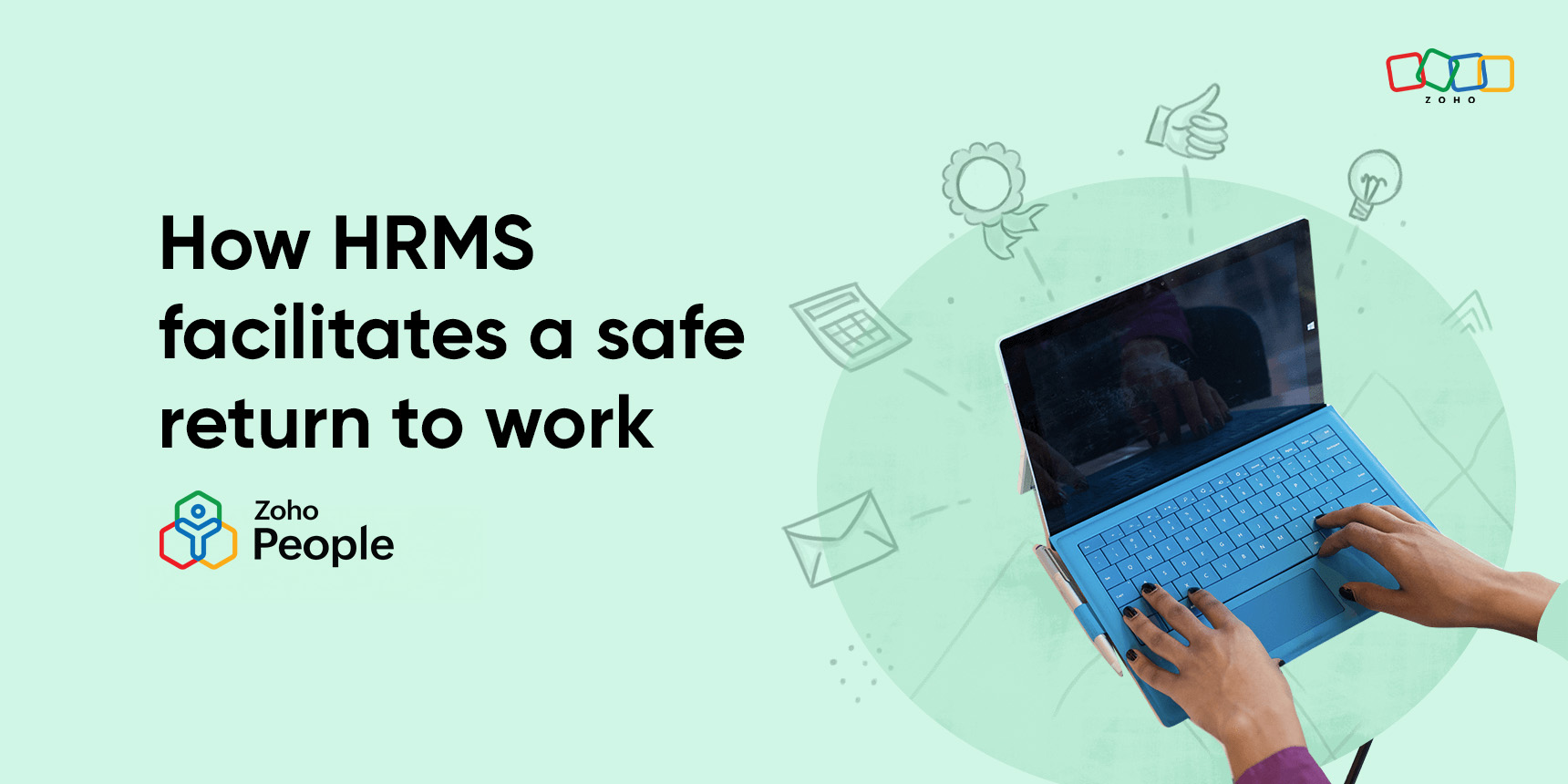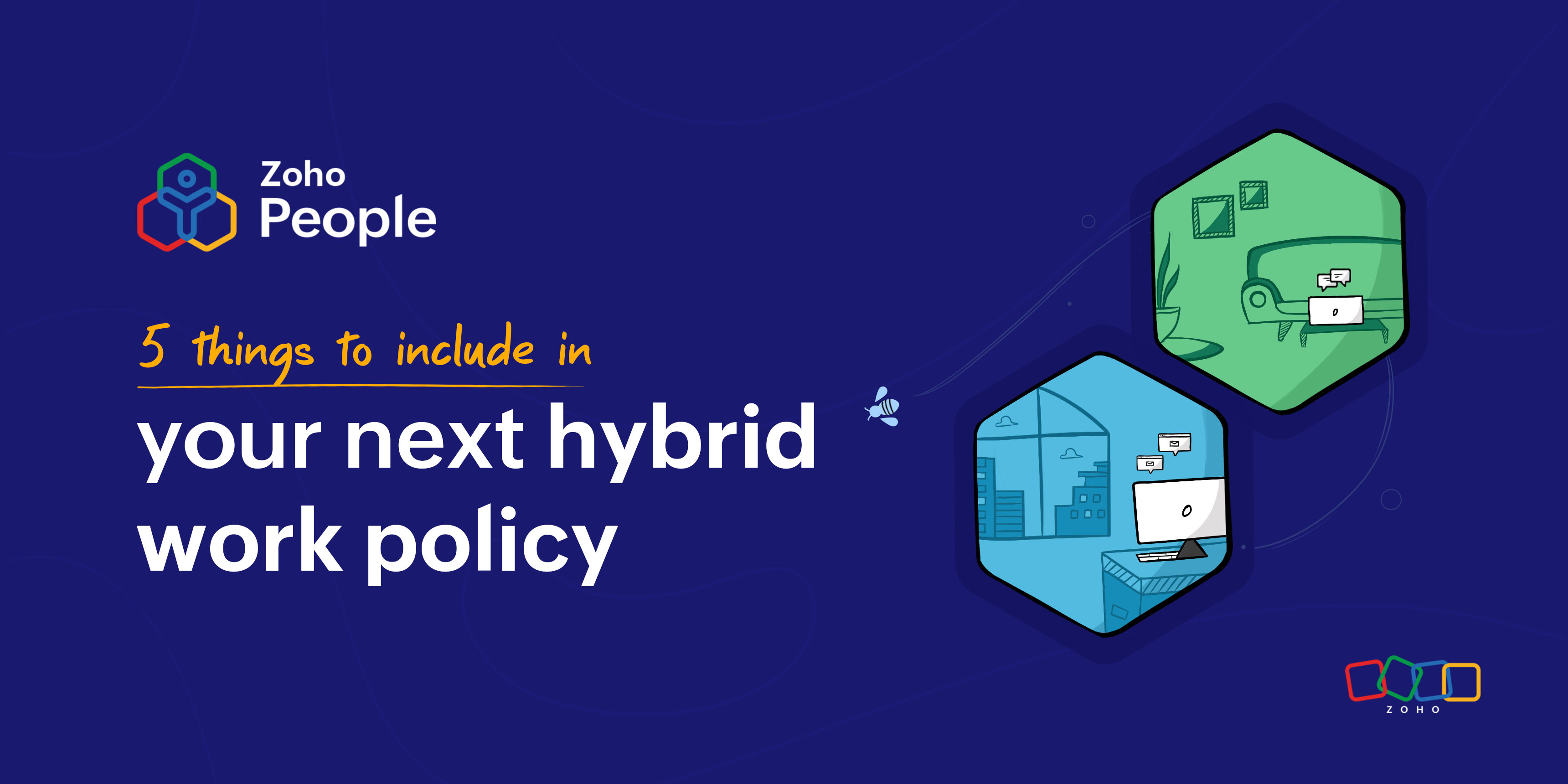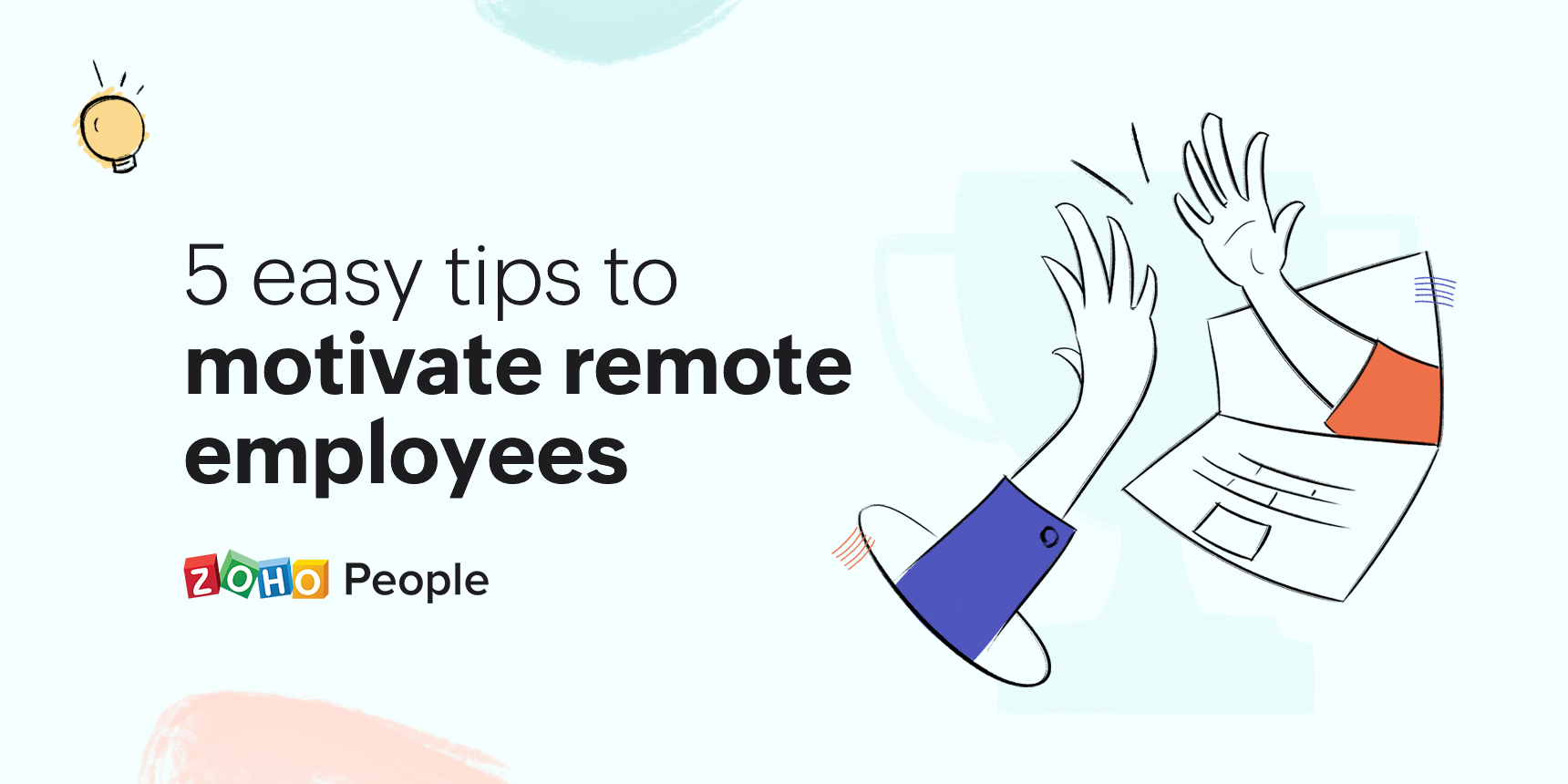- HOME
- COVID-19 Resources
- How HRMS can prepare your organization for the safe return of employees
How HRMS can prepare your organization for the safe return of employees
- Last Updated : May 8, 2025
- 5.0K Views
- 6 Min Read

In some regions around the world, governments are beginning to ease their stay at home orders with suitable restrictions, and organizations are planning to return employees to work. If your organization is in one of these places, it is crucial that you ensure proper adherence to safety regulations. As an HR manager, you will have to take care of several legal, health, and employment responsibilities to help your employees stay safe and healthy. While this may be a little challenging, using an HRMS can relieve a substantial load off your shoulders and prepare your employees for a safe return to the workplace. Here are some of the instances that can be handled efficiently with an HRMS while you reopen your worksites:
Recording employee health status
This is one of the most crucial steps that have to be conducted systematically to ensure employee safety. You have to check if your employees and their families are in good health before they can safely work around others. Something as sensitive as employee health data should be collected in an organized manner to improve its security and accuracy.
HRMS can be of great help with this. You can create forms with relevant fields to gather health information from your employees and store it safely online. Using workflows, you can even send reminders for employees to fill out their health information, and trigger mail notifications when an employee submits their health status.
Developing a reopen plan
Creating a business reopen plan will help you track the readiness of your workforce to resume business. You’ll have to assess the risk of opening your worksite and decide on all the steps that have to be taken to reduce the risk of COVID-19. Communication is the key to developing a foolproof plan. You’ll need to get feedback from your employees to make sure that you don’t miss anything in your plan. HRMS is a great platform to discuss and make decisions instantly. Internal forums can be used to learn what each of your employees think, and to ensure that everyone is on the same page. Even dedicated groups can be created to start specific discussions. Conversations can be initiated from anywhere, anytime!
Keeping your employees informed
Once you draft your plan, it is essential to keep your employees informed on the steps they should take to ensure safety. This includes social distancing norms, travel guidelines, customer meetings, and more. These announcements should reach every employee in your organization. With HRMS, your employees will never miss any announcements. As soon as you post your guidelines in the internal feeds, mail notifications will be triggered to each of your employees. They can also post their concerns in the comments section, if they have any.
Creating checklists
Revising the business plan, establishing social distancing norms, disinfecting the office, and placing sanitizers and masks are some of the many tasks that have to be completed before reopening your worksite. Missing out on even one of these can put your employees’ health and safety at risk. With HR software, you can create a checklist of all the essential tasks that have to be completed before they reopen. You can also assign tasks to others and schedule their completion. Emails can be triggered when a task is completed or incomplete for a long time.
Managing employee requests
During the return, your employees may have a few questions. These may be about transportation, child daycare facilities, shift schedules, and more. These requests have to be managed quickly and efficiently in an organized manner. With HR software, employee requests can be handled efficiently to ensure a smooth reopening. Each question is categorized so that it goes to the relevant HR professional directly, without an intermediary. You can also define the actions that have to be initiated if a question is left unanswered. You can even attach files that answer employee questions.
Monitoring employee attendance
Many organizations may be accustomed to using biometric fingerprint attendance systems to record the clock-in and clock-out time of your employees. But, with the COVID-19 situation, this may not be possible. The online attendance management system that comes with HRMS can be a great solution to this issue. Your employees can mark their attendance through the web or mobile application. You can enable the geographical and IP restriction features to ensure that they clock-in and clock-out from your worksite. Your employees can even record the time spent on different projects.
Handling employee shifts
If your organization has several employees, you may create different shifts to follow social distancing norms and to control the crowd. Shift scheduling can become a huge task when it is managed manually. Faulty schedules can make your employees dissatisfied. You can schedule employee shifts daily, weekly, or monthly, so that employees can plan their work accordingly. Workflows can be created to notify employees whenever there is a shift change or swap. Period shift rotations can also be automated.
Sharing letters, files, and forms
Your employees may be required to carry an authorized letter or form to commute to work. It can be difficult to mail or share these files through chat or messengers. HRMS can make this step very easy for your organization. You can upload a template, which can be downloaded and used by your employees. You can also upload relevant files for each of your locations if your organization has a global presence, including policies, rule books, your employee handbook, and anything else that can help employees become familiar with the new rules. Notifications can be triggered through email whenever a file is added.
Conducting employee training programs
Return to work training is essential to help your employees return with positivity, motivation, and confidence. Giving them an outline of the modified policies and tools that they are required to use, how they can get used to the new normal, and how they can meet with their clients can make their return as seamless as possible. However, assembling groups in conference rooms to conduct these courses is not advisable at this time. This is where a Learning Management System (LMS) in HRMS can help. With LMS, courses can be created in multiple batches to accommodate groups of employees. Live virtual sessions can be conducted easily, while facilitating discussions and feedback.
Also read:How a Learning Management System simplifies e-learning
Improving employee experience
It is important to acknowledge that these are difficult times for your employees. The fear of contracting the virus can be very high, especially when they are travelling. While your employees take risks to keep your business going, you should do everything possible to keep them positive and satisfied. With the right system in place, an HRMS:
Allows you to recognize and appreciate your employees’ hard work
Enables employees to provide feedback about any aspect of your organization
Makes all the essential HR functions as easy as possible for your employees
Provides employees with all the necessary information for returning to work
These are just a few of the many things that an HRMS can do for your employees.
Reopening your worksite can be stressful, as even a small error can lead to serious consequences. With the safety of your employees at stake, it is essential to complete each step with utmost care. While you prepare your employees to return, an HRMS can help you with each step, and greatly ease the transition in your organization. By automating these tasks, you can balance employee safety, happiness, and productivity.
Zoho People, our HRMS, can help your organization return to work with much ease. Zoho People takes care of your HR processes, while you take care of your employees. Learn more about Zoho People here.
Also read: How cloud-based HRMS is transforming HR operations
 Tarika
TarikaContent Specialist at Zoho People


